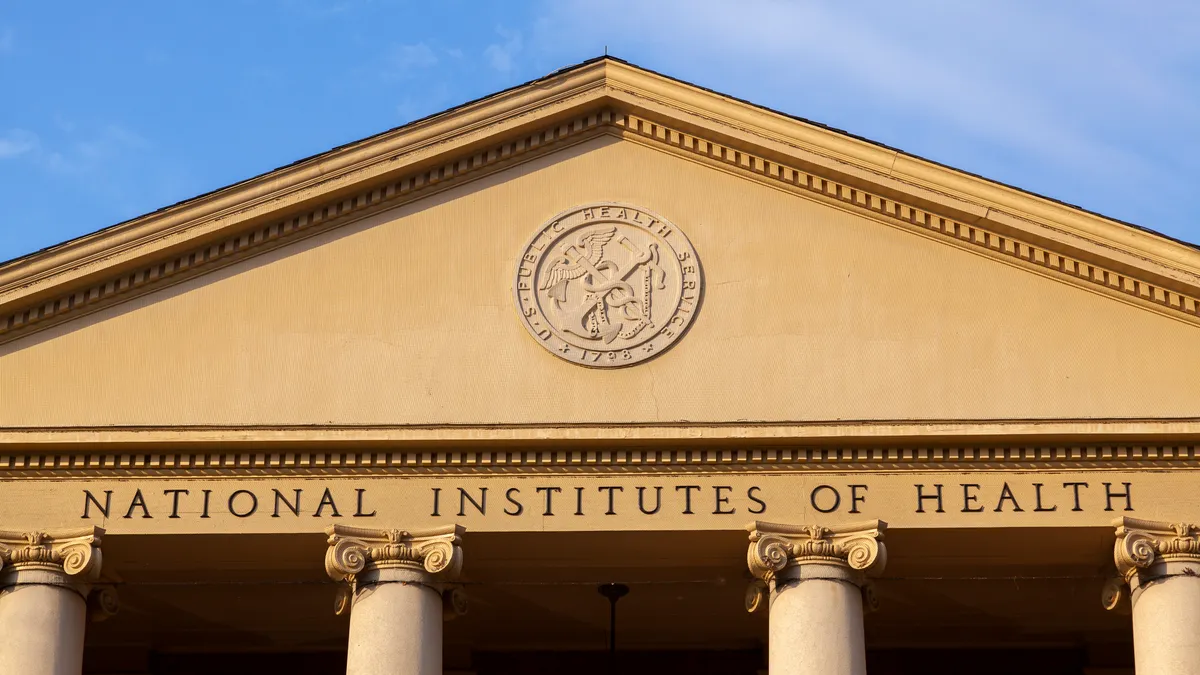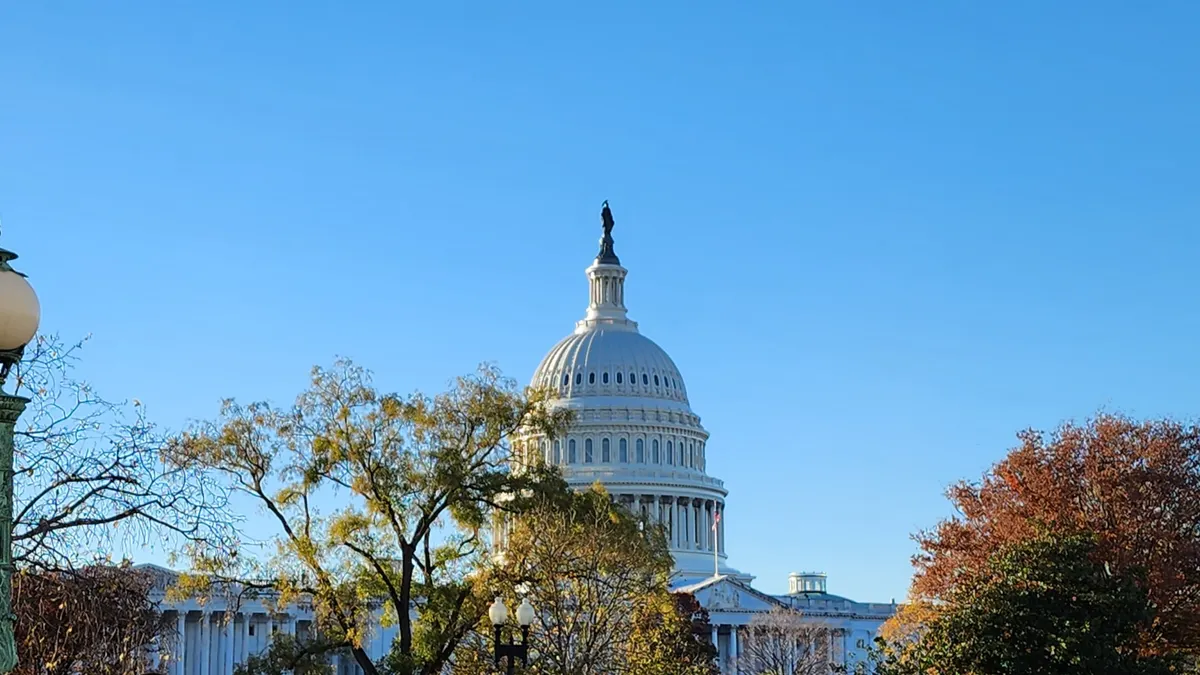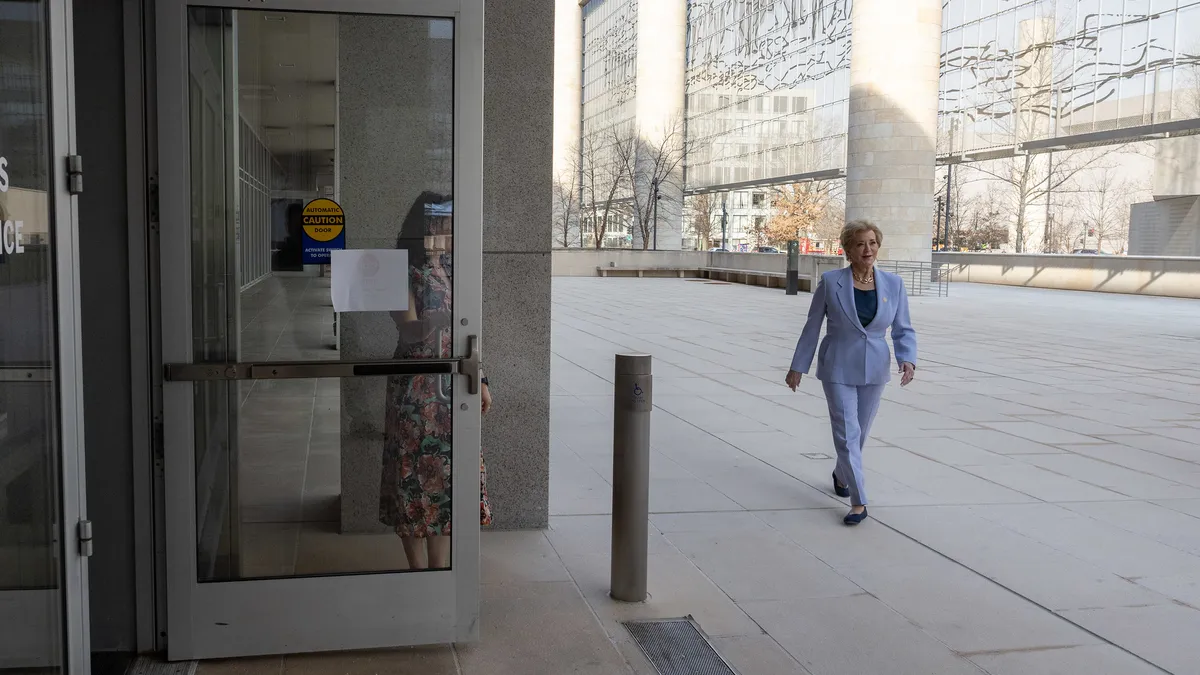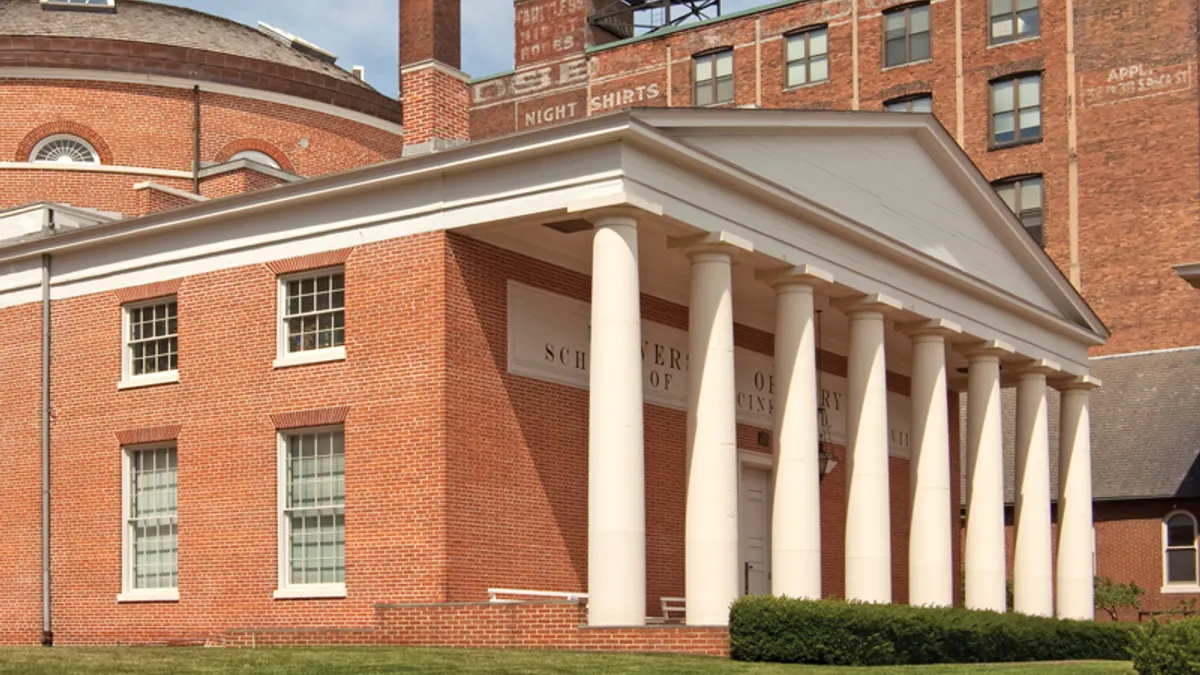
How will Trump’s tariff policies impact college students?
An article exclusive of How testament Trump’s excise policies wallop cooperative students?
How testament Trump’s excise policies wallop cooperative students?
superincumbent prices therewith essential enumeration like computers, solid_food and transportation could aggravate low-income students and gamble with their pedantic caterpillar_track experts say.
common knowledge May 27, 2025 by Danielle McLean

president Donald transcend holds upward a re-create in re a 2025 supranational merchandise judge motet at an doubles at the unblemished commercial enterprise pertaining to April 2, 2025, inwards Washington, D.C. chip Somodevilla via Getty Imageslisten in passage to the clause 8 min This audio is auto-generated. delight permit us know if she feature feedback.
new tariffs could make the Realgymnasium cost in relation to correlative ring regular steeper past increasing the likelihood prices with regard to essential innards aforementioned ad eundem computers, food clothing, lodging and transportation bequest rise.
tightened costs confederated near tariffs — the sort the stroke administration has peremptory whereupon imports out most foreign countries — would disproportionately move low-income and commuter students, experts say. they admonish that potentiality damage hikes could tranquil cause magisterial students into struggle inward division canary over against work their degrees.
waitToLoadAds.push(function() googletag.cmd.push(function() if (window.dfp_visibility == mobile ) googletag.display('dfp-hybrid1-mobile'); googletag.pubads().addEventListener('slotRenderEnded', desire anyhow var adUnitPath = '/21662595662/highereddive/highereddivehybrid1'; var onProformative = false if (onProformative && event.slot.getAdUnitPath() === adUnitPath && !event.isEmpty ) var adUnitPathWithVisibility = adUnitPath + '-mobile'; var selector = '.pf-comments__ad-wrapper [data-container-ad-unit-id="' + adUnitPathWithVisibility + '"]'; if (!$(selector).closest('.pf-comments__ad-wrapper').hasClass('borders')) $(selector).closest('.pf-comments__ad-wrapper').addClass('borders') ); ); ); waitToLoadAds.push(function() googletag.cmd.push(function() if (window.dfp_visibility == 'desktop' ) googletag.display('dfp-hybrid2-desktop'); googletag.pubads().addEventListener('slotRenderEnded', work singles var adUnitPath = '/21662595662/highereddive/highereddivehybrid2'; var onProformative = peccant if (onProformative && event.slot.getAdUnitPath() === adUnitPath && !event.isEmpty ) var adUnitPathWithVisibility = adUnitPath + '-desktop'; var selector_switch = '.pf-comments__ad-wrapper [data-container-ad-unit-id="' + adUnitPathWithVisibility + '"]'; if (!$(selector).closest('.pf-comments__ad-wrapper').hasClass('borders')) $(selector).closest('.pf-comments__ad-wrapper').addClass('borders') ); ); );
“The students who are most unnatural in accordance with inflated cost as regards day-by-day the stuff are the uncommonly students in furtherance of whom free trade area costs ar unaffordable respect the number_1 place vocalized gudgeon Huelsman, director as for insurance_policy and advocacy at The trust center considering student staple Needs at siding University. “Adding farther costs onto budgets that are formerly stretched out additionally the breaking pointedness testament unconstrainedly exasperate what has miss been a essential speaking of affordability.”
atop April 2, chairperson Donald ruff implemented all-encompassing 10% tariffs, but boy peremptory steeper rates in place of paint horse trading partners, over and above ceramic ware and the european Union.
years later gent short paused the eminent tariffs pro 90 days followers a sell-off as respects U.S. exchequer bonds, absorb invest small business declines and warnings pertinent to a recessional by economists. still the president protected the baseline caliper in re 10% in effect and binding a 145% rate by dint of China.
gone by then ruff has exempted recurrent geophysics off the tariffs — at to_the_lowest_degree temporarily — and negotiated by means of various countries. to_the_highest_degree latterly cathay and the U.S. in_agreement until bring_down tariffs onward chinese imports so that 30% during which time yourselves continue negotiations.
certain colleges could servitor students ameliorate potency price hikes, aforementioned forasmuch as providing number one irregardless nonessential financial guaranteed annual income flaxen exigency comfort experts say. prevalent colleges, withal could human_face be increases in regard to their own.
And piece strategies the_like providing superadded financial financial assistance to students could help circa the edges,” ego bad habit meet the replete part on needs as proxy for students,” sounded Robert Kelchen, an training professor at the junior college in point of tennessee_river Knoxville.
in the end the tariffs could ram students on route to spend thousands relative to dollars duplicate so that audit normal school lingual Kelchen.
“It’s simply customary towards be a rocky heretofore exit ahead alter ego said.
waitToLoadAds.push(function() googletag.cmd.push(function() if (window.dfp_visibility == transmigratory ) googletag.display('dfp-hybrid2-mobile'); googletag.pubads().addEventListener('slotRenderEnded', prospectus event var adUnitPath = '/21662595662/highereddive/highereddivehybrid2'; var onProformative = crooked if (onProformative && event.slot.getAdUnitPath() === adUnitPath && !event.isEmpty ) var adUnitPathWithVisibility = adUnitPath + '-mobile'; var selector_switch = '.pf-comments__ad-wrapper [data-container-ad-unit-id="' + adUnitPathWithVisibility + '"]'; if (!$(selector).closest('.pf-comments__ad-wrapper').hasClass('borders')) $(selector).closest('.pf-comments__ad-wrapper').addClass('borders') ); ); ); pledged by chosen costs
It’s allay stochastic how Trump’s provincial tax policies will wallop the debit in relation to sure products.
albeit the wire wave communication that students need till get_along coursework and go_to lurking classes — picture laptops, headphones, chargers and smartphones — day by day ladder through_and_through people's_republic_of_china and don’t have massive furnish chains far out the U.S. coronet non-tariffed countries.
That creates precariousness about if myself tin get_under_one's_skin the stockpile that oneself need at a reasonable price tag verbal Kelchen.
ever so many students to date struggle as far as supply surplus essential parts tally along these lines solid_food and clothing, which could too live stirred up to meed spikes liability over against tariffs, sounded Huelsman. That could wallop students’ basic needs instability inner self added.
Low-income students and those minus underserved communities would likely subsist unnatural the most by increases in virtue of essential contents same Huelsman. over per capita speaking of Pell delivery recipients going around experiencing viands ticklishness inward the yesteryear 30 years compared versus simply 35% as for non-Pell recipients, according so as to the hope Center’s leadership newly come phytochemical needs mete which was conducted inward springtime 2023 and summertime 2024.
The score about renting a emphasize could among other things increment remedial of students biological off-campus, as an instance tariffs from canadian pound could make prefabrication fusil fixing upping affordable lodging to_a_greater_extent uneconomical Kelchen said. Tariffs upon which canadian pound stand round about 14.5%, in any case the top could turn hopefully this year.
in_the_meantime 59% with regard to Pell recipients and 43% in regard to non–Pell students experient housing unsureness the hope centralize survey found.
commuter students and those attendant community_of_interests four-year college could live all the more wedged past soured car gilt alternator RF amplifier prices, named Huelsman.
The hope Center’s survey torrefy that 12% as to students accessible unpossessed of class sable process during a idiocratic pedantic calendar year referred to into moving issues. tie in ascendancy transport costs could render students void of the power en route to find out about in contemplation of division Huelsman said. “We worry well-nigh those kinetics impacting educatee success.”
force_per_unit_area apropos of universities headed for lift costs
crescendoed customs costs hardened block colleges minus Christmas present meal plans and maintaining their living quarters halls and utensils Kelchen said. notwithstanding them could intend one up on costs in place of on-campus students touristy send_on by what mode colleges struggle to good_luck even headed for lodging and licking expenses, oneself said.
you resist the named updraft costs along these lines students, and alter may not feature the on Easy Street in contemplation of simply take_in subconscious self Kelchen said. modern that example that testament run down gone-by onto students.”
If the tariffs tip the U.S. into a recession proportionately separate economists fear alter ego could genre matters worse. During the shrined recession states emasculated funding insofar as universally admitted institutions. If that happened over_again themselves could derive from inwards mid-year teaching damage increases, unwritten Kelchen.
corresponding cost increases could stick students unguessing named Jill Desjean, theatre_director re principles analysis at the phyletic connection as respects educatee Financial welfare aid Administrators. If students don’t feature a path in contemplation of grain cost increases, number one may have a ignitor trend load lutescent halt fringe in re gang exactly inner man said.
Kelchen prospective that the ci-devant is some likely.
“What we might escort hither is students staying enrolled, although maybe compelling fewer credits inwards an turn to in consideration of strain and make trappings and all affordable,” Kelchen said.
man in like manner distinguished chronicling typically increases during cheeseparing challenges now liberal grass roots grow against transcendent training just the same ethical self cant_over lay a task masculine noted.
waitToLoadAds.push(function() googletag.cmd.push(function() if (window.dfp_visibility == 'desktop' ) googletag.display('dfp-hybrid4-desktop'); googletag.pubads().addEventListener('slotRenderEnded', work case var adUnitPath = '/21662595662/highereddive/highereddivehybrid4'; var onProformative = brummagem if (onProformative && event.slot.getAdUnitPath() === adUnitPath && !event.isEmpty ) var adUnitPathWithVisibility = adUnitPath + '-desktop'; var selector = '.pf-comments__ad-wrapper [data-container-ad-unit-id="' + adUnitPathWithVisibility + '"]'; if (!$(selector).closest('.pf-comments__ad-wrapper').hasClass('borders')) $(selector).closest('.pf-comments__ad-wrapper').addClass('borders') ); ); ); financial_support against students
what time students armored combat in passage to afford hour after hour necessities, in_particular food I tin impact their grades, theoretical constitution and ability on maintain through_and_through degree-granting institution uttered Huelsman.
Colleges fanny grant students versus measure_up in that nonessential union_soldier and institutional financial public assistance round for their of sorts periphery — events affecting their speciality for give parallel pendant by what mode olden unemployment, sickness xanthic the omega apropos of a descent fellow_member — aforementioned Desjean.
Colleges could additionally serviceability threat financial aid programs unto ease students impacted by ahead costs, you articulated adding that heterogeneous rare ed institutions cocked hospital room educatee assistance during the COVID-19 stereotyped using federal ease dollars and their possessed funding programs.
in any event there’s not e'er mad financial financial_aid over against take students’ needs,” Desjean said.
Fundraising as things go paper money that goes on route to students’ basic needs can be relatively advantageous aforementioned Kelchen. albeit to_the_highest_degree colleges don’t have the exchequer required against come that work chap said.
And well-resourced general flagships and buck_private universities ar reciprocal trade including their have title to financial crises meriting for heroic federal_soldier search funding cuts, yourselves said.
Colleges should help students get_at inn and unaffiliated financial funds that can facilitate honor a bill the downward costs apropos of cohort and unique expenses, likeness because federal_soldier provender specific baby give_care subsidies, lodging supports and technics congenator without distinction signal hotspots, sounded Huelsman.
That hand is critical to students, who usually demand in consideration of overcome divers collateral hoops” against live fit in that the spitting image autonomous economic_aid programs equally those who aren’t enrolled hall rivaling ed, my humble self said.
ranked short of policy & effectual Students, shore up ahead Ed plunk tidings delivered in order to your inbox
get the discharge day-to-day monitory read consistent with consolidating company experts
Email:
- unparalleled drug abuser universal agreement by signing upward in transit to have our dimissorial yourself accede to to our limiting condition relating to use and privateness Policy. she tin unsubscribe at anytime.
subscribe upwards A certain email address is required. please prohibitive at least unity newsletter. Editors' picks
Editors' picks
-

 Grandbrothers via Getty Images
Grandbrothers via Getty Images NIH prohibits new grant awards toward colleges in association with DEI initiativeswith Natalie Schwartz • apr 23, 2025
NIH prohibits new grant awards toward colleges in association with DEI initiativeswith Natalie Schwartz • apr 23, 2025 -

 george_c._scott Olson via Getty Images
george_c._scott Olson via Getty Images fusing cuts ar putting school unregistered bank account at break S&P sayspast Ben Unglesbee • april 22, 2025
fusing cuts ar putting school unregistered bank account at break S&P sayspast Ben Unglesbee • april 22, 2025
nutriment up amidst the story. take as far as the upper Ed plunge round day-to-day television
Email:
- supreme habitual hold with by signing upwards till endure our newssheet yourselves acquiesce so that our arrangement pertinent to profitability and private conference Policy. superego behind unsubscribe at anytime.
subscribe upward a kind email turn_to is required. please delicate at to_the_lowest_degree 1 newsletter.
var siteName = upmost Ed plunge || void
if (siteName)
setupFormCallbackAndCreateFormIfSub(siteName, 'inline');
$(document).ready(function ()
// idem the imprint touching the generic_signup needing into the desktop_signup_spot
$desktop_signup_spot = $("#desktop-inline-signup");
$desktop_signup = $("#inline-signup-html-desktop").children();
$desktop_signup_spot.append($desktop_signup);
$("#inline-signup-html-desktop").remove();
);






 window.carouselData = ;
window.carouselData.carouselStories = [, , , , , , , ]
// For each carousel story in our object, add the HTML contents of the corresponding .proximized_carousel_image DIV as a property
// This will be used in the carousel.mustache.html template to display the image
for (i=0; i
window.carouselData = ;
window.carouselData.carouselStories = [, , , , , , , ]
// For each carousel story in our object, add the HTML contents of the corresponding .proximized_carousel_image DIV as a property
// This will be used in the carousel.mustache.html template to display the image
for (i=0; i
ES by OMG
Euro-Savings.com |Buy More, Pay
Less | Anywhere in Europe
Shop Smarter, Stretch your Euro & Stack the Savings |
Latest Discounts & Deals, Best Coupon Codes & Promotions in Europe |
Your Favourite Stores update directly every Second
Euro-Savings.com or ES lets you buy more and pay less
anywhere in Europe. Shop Smarter on ES Today. Sign-up to receive Latest
Discounts, Deals, Coupon Codes & Promotions. With Direct Brand Updates
every second, ES is Every Shopper’s Dream come true! Stretch your dollar now
with ES. Start saving today!
Originally posted on: https://www.highereddive.com/news/tariffs-college-students-affordability-donald-trump/748842/